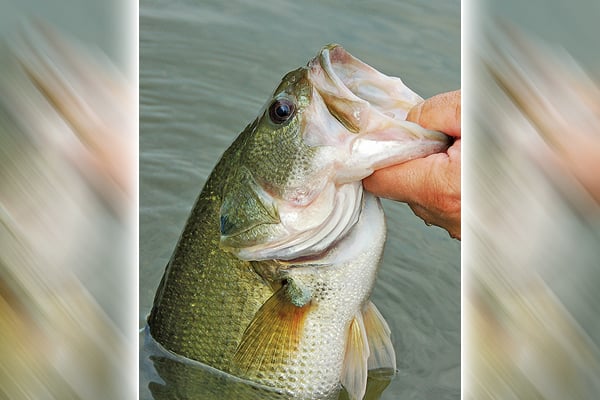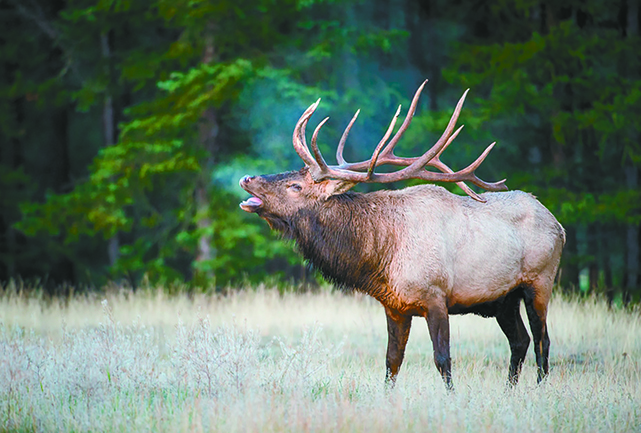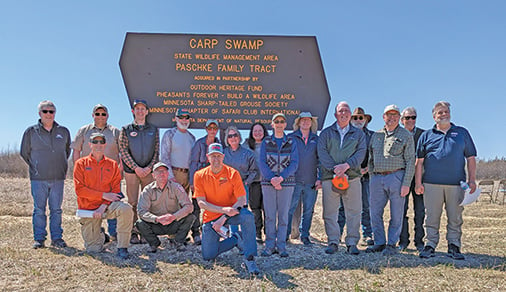Shakespeare Jr., Hopper, Lamb headed for Bass Fishing Hall of Fame – Outdoor News

Springfield, MO — The plaque wall at the Bass Fishing Hall of Fame will see three new additions in 2025, a formidable trio that represents a cross section of industry pillars, including boat building, media, tournament organization and tackle innovation.
The Hall of Fame will welcome William Shakespeare Jr., Randy Hopper and Craig Lamb, who were selected from a diverse 20-person ballot by the Hall of Fame’s 30-member Selection Panel and living Hall of Fame inductees. The roster of Hall of Famers now stands at 103.
Shakespeare’s contributions to sport fishing border on immeasurable with his development of the first level-wind reel in the late 1800s, ground-breaking lure inventions and the introduction of the world’s first fiberglass fishing rod in the 1940s.
MORE BASS COVERAGE FROM OUTDOOR NEWS:
Understand the forage to become a better bass angler
Angler lands ‘unicorn’ largemouth, weighing nearly 9.5 pounds, in northeast Ohio reservoir
Breaking down the many black bass subspecies beyond largemouths and smallmouths
Much like the works of his (unrelated) namesake playwright and poet did for literature, William Shakespeare Jr. left an everlasting mark on the sport of fishing.
Born in Kalamazoo, Mich., in 1869, Shakespeare’s achievements in product development put him in elite company. His first breakthrough innovation was incorporating a level-wind, traveling bracket into a casting reel that allowed fishing line to spread evenly across the spool as it was wound. It made casting baits less frustrating and more fun.
Additionally, Shakespeare’s manufacturing efforts spread into artificial lures, such as The Evolution, The Sure-Lure, The Shakespeare-Worden Bucktail Spinner and The Tournament Frog. By the late 1930s, Shakespeare had developed the Wondereel, which incorporated features that reduced backlash and improved drag performance.
Shakespeare celebrated its 50th year in 1947 by securing the patent rights to the world’s first fiberglass fishing rod, the Howard Glastik Wonderod. The revolutionary rod made bamboo and steel rods virtually obsolete.
Hopper, a Flippin, Ark., native, is an innovator whose fingerprints are all over various breakthrough developments in the design, construction and evolution of modern bass boats.
Hopper has been a driving and innovative force in the bass boat industry for more than 50 years. He worked side-by-side with company founder Forrest L. Wood in building and refining the standard-setting Ranger bass boats.
He helped design and incorporate the first aerated livewell for a bass boat in 1973, paving the way for catch-and-release tournaments to become more common.
Under Hopper’s direction, Ranger was the first boat brand to incorporate flotation foam that didn’t deplete ozone, and he also helped refine boat-building processes that drastically reduced other harmful emissions.
Lamb, a Tennessee native, has spent the vast majority of his 40-plus year career behind the scenes in various media roles and on the B.A.S.S. tournament operations staff with the sum total of his invaluable contributions leading to his election.
Lamb has been omnipresent on the bass fishing scene since the mid-1980s when he served as Wood’s “caddy” on the B.A.S.S. tournament trail. That gig allowed him to help in the production of “The Bassmasters” TV show, which aired to a nationwide cable audience on The Nashville Network.
In 1986, when Dewey Kendrick replaced Harold Sharp as the tournament director, he tapped Lamb as his assistant, allowing the Tennessee native to witness and participate in some of the watershed moments on the sport’s historical timeline.
The Class of 2025 will be honored later this year during Celebrate Bass Fishing Week, which will highlight the Hall’s 25th anniversary and culminate with the induction banquet on Sept. 25 at Johnny Morris’ Wonders of Wildlife National Museum & Aquarium in Springfield, Mo.






